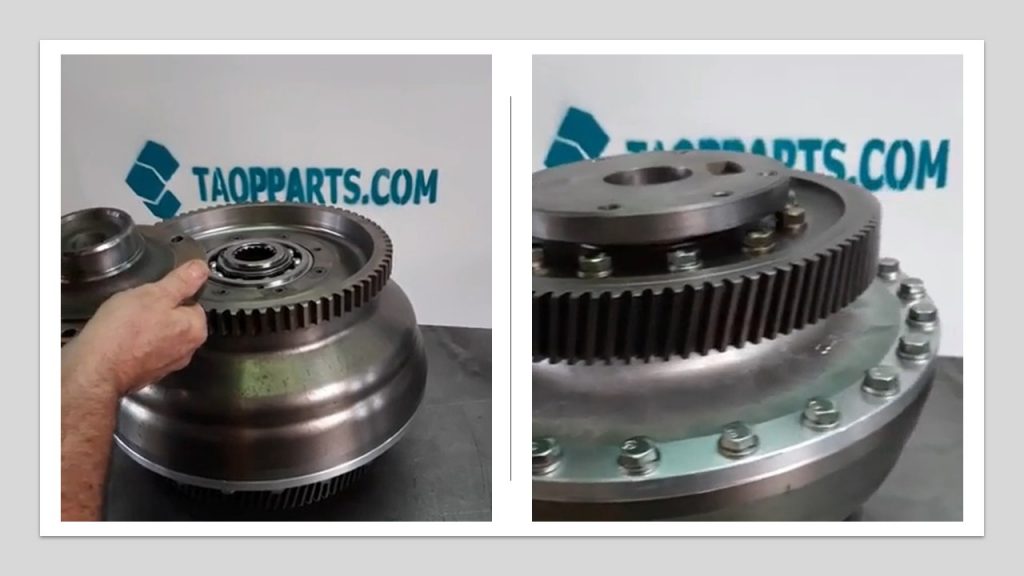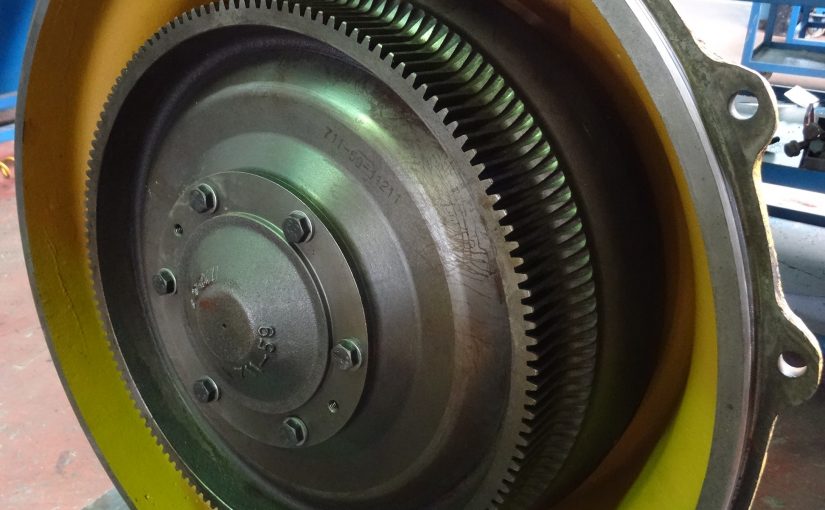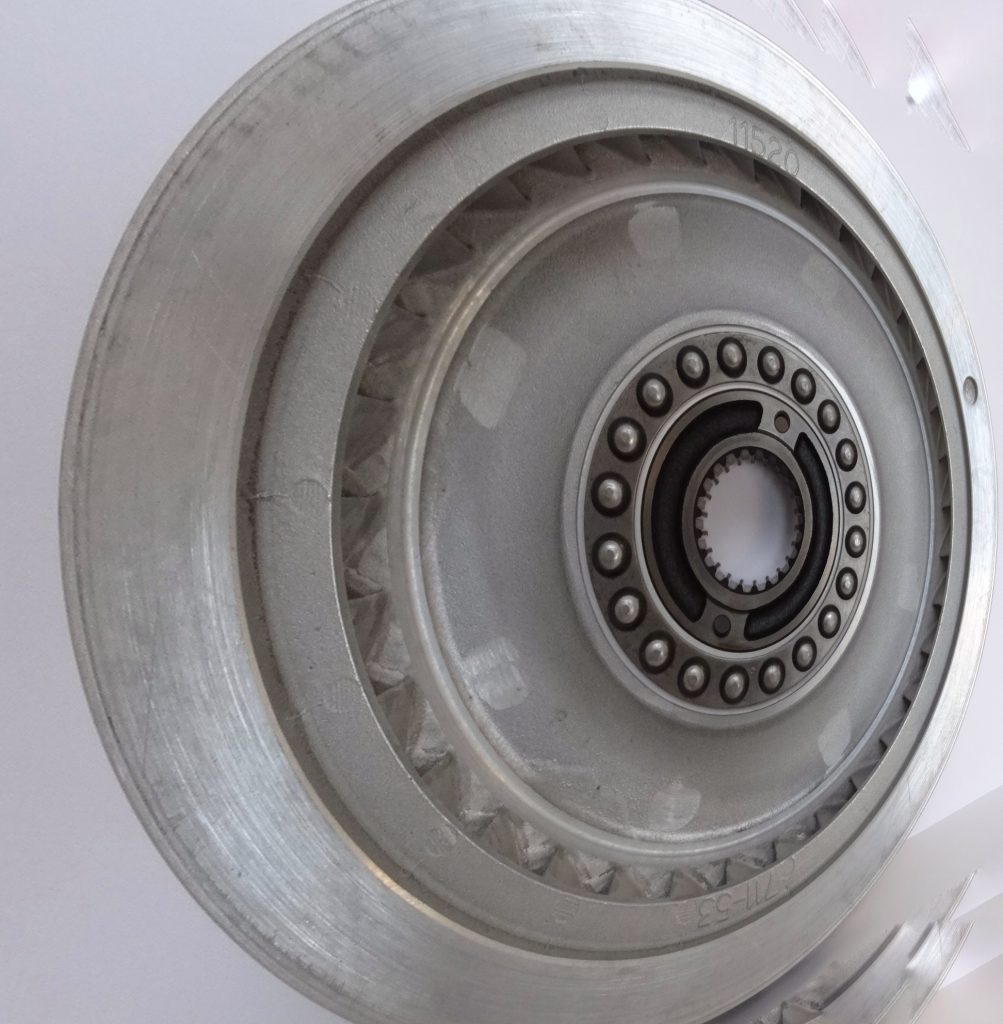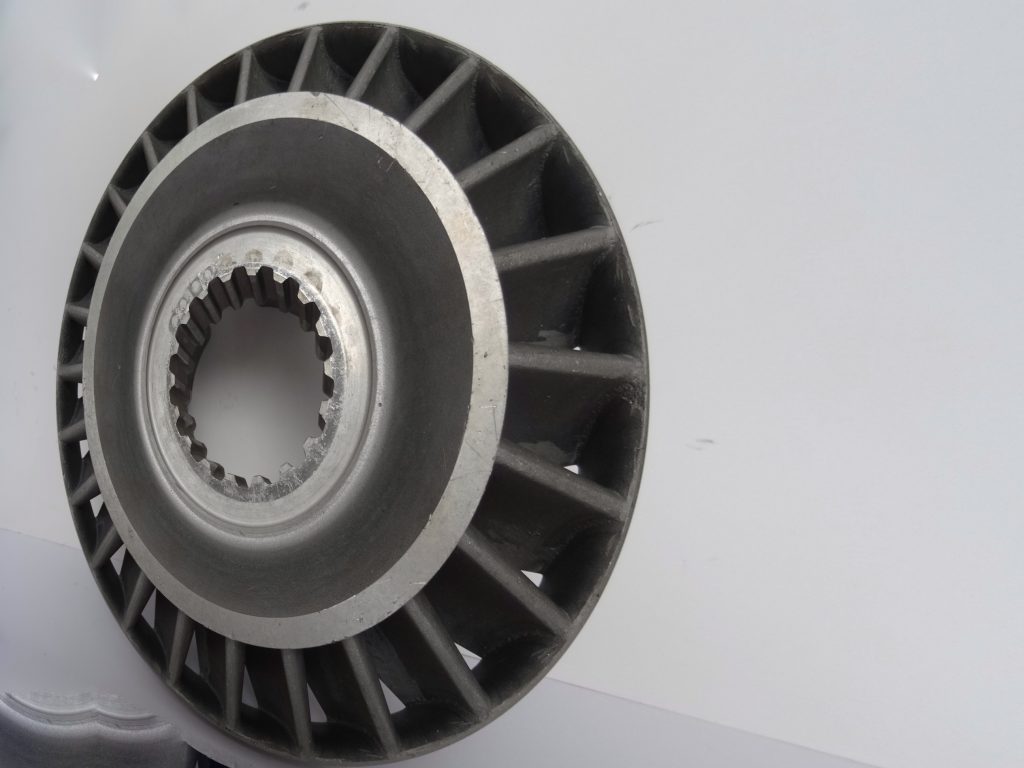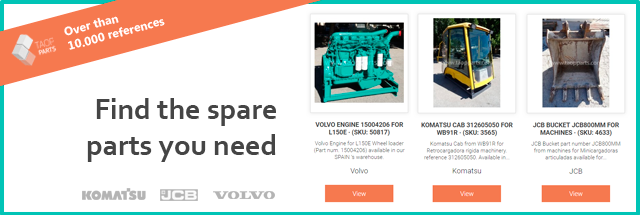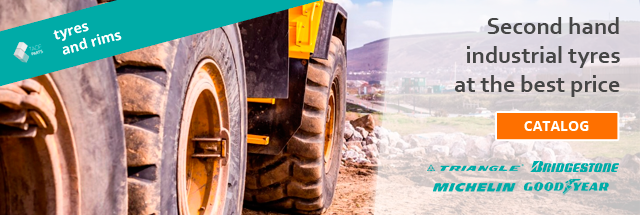A torque converter is a circular shaped device, positioned between the engine and the transmission. It connects the motor to the gearbox through the fluid motion which interacts with the pump shovels, a turbine or a stator, inside a toroidal-shapes case.
Table of Contents
Torque Converter composition
A converter consists of:
- Pump
The pump inside a torque converter is a type of centrifugal pump.
- Turbine
The turbine causes rotating of transmission which basically moves the machine.
- Stator
The stator resides in the center of the torque converter. His job is to redirect the fluid returning from the turbine before it touches the pump again.
- Transmission fluid
Transmission fluid is used to lubricate the transmission components of a machine for optimum performance and generates thrust.
But how does a torque converter work?
Torque converter operation
Recapitulate, a torque converter consists of differents elements each of which has its function.
The pump is connected directly to the driveshaft, receiving the rotary motion which, due to the centrifugal force, sends the fluid radially against housing walls. The shape of these walls causes the fluid to travel through it, reaching the turbine and rotating it by acting on its blades. Afterwards, the fluid returns to the pump passing from the center of the converter, through the stator, to then restarting the cycle.
The stator is mounted on a shaft integrated into gearbox housing, on a free wheel, which allows it to rotate in only one direction; it receives the fluid from the center of the turbine and thanks to the blade geometry, it directs the fluid to the pump. The rotor stopping the fluid to slow down or moves back to the turbine is responsible for multiplying the torque, causing the kinetic energy of the fluid increases at each cycle.
A difference in rotation speed between the pump and the turbine implies greater relative speed between the two rotors and a greater power.
Operating conditions:
- As long as the motor is running, the torque converter is working too. When stopping the vehicle with the engine running, a small torque is transmitted to the vehicle, but it is enough to activate the brake to remain still. This is called “stalled”;
- During acceleration the pump turns much faster than the turbine, transmitting more torque to the gearbox; in this phase rotor presence is crucial as it energizes the fluid motion and causes the transmitted torque to be much higher, even two or three times, than the one available in the absence of the converter;
- When the cruise speed is reached, the pump and turbine run at very similar speeds, the transmitted power is minimal, the effect of the stator is lost and the converter behaves as if it were a normal hydraulic coupling.
In the next video we show you how to assemble a torque converter when one or more parts are damaged.
First, you have to clean and prepare all components.
Then, is mounted the locking segments.
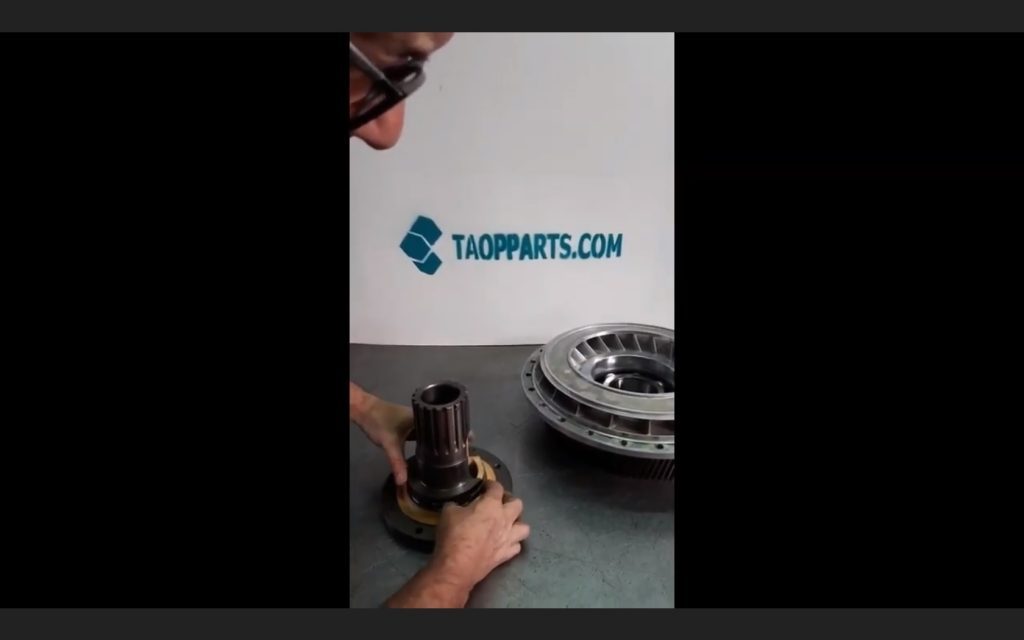
Later, is mounted the stator.
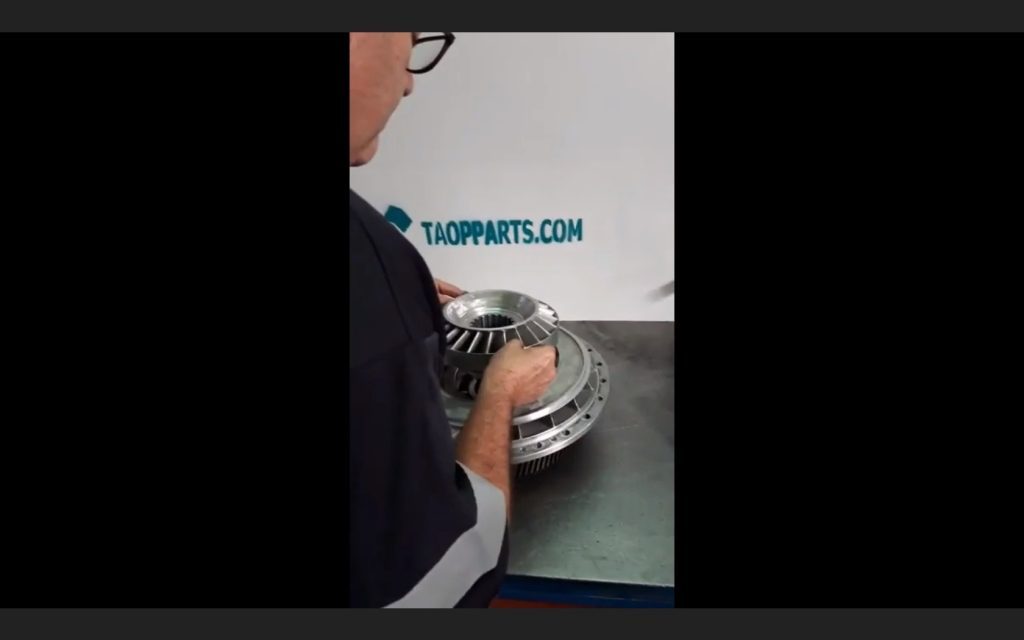
Finally, is mounted the turbine.
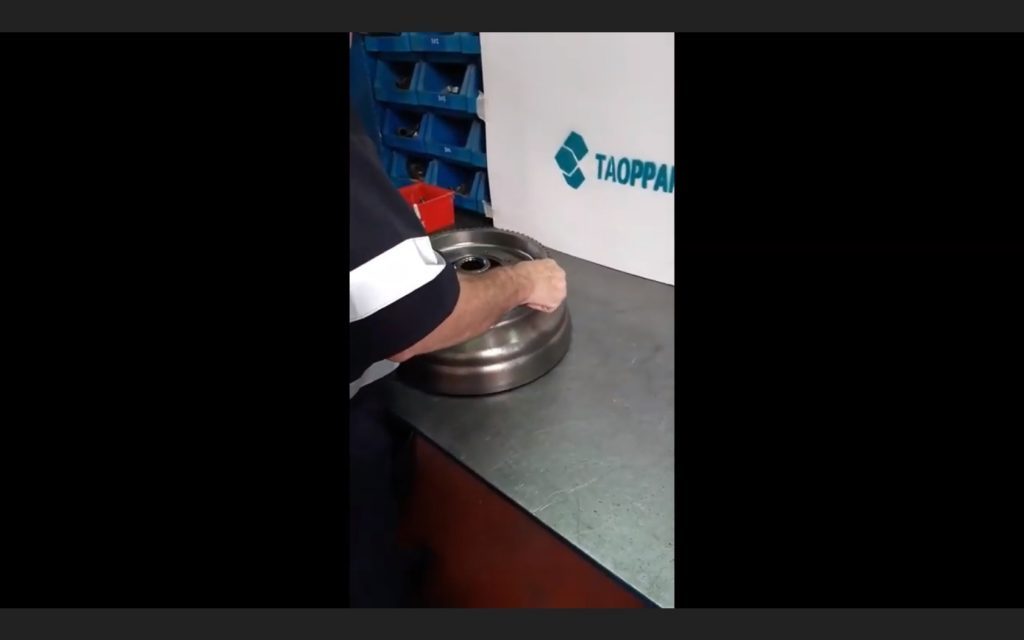
Video: Torque converter assembly
After mounted all torque converter components, we proceed assemble them.
In this video you can show how to assemby the torque converter.
We employ screws putting glue, so they don’t loosen up.
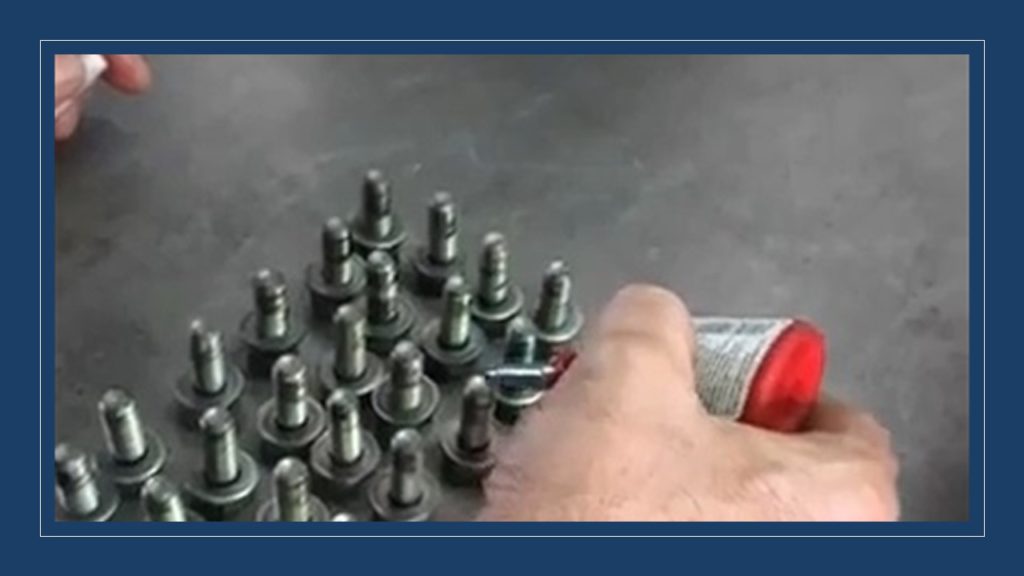
Finally, putting back cover, mounting is completed.
